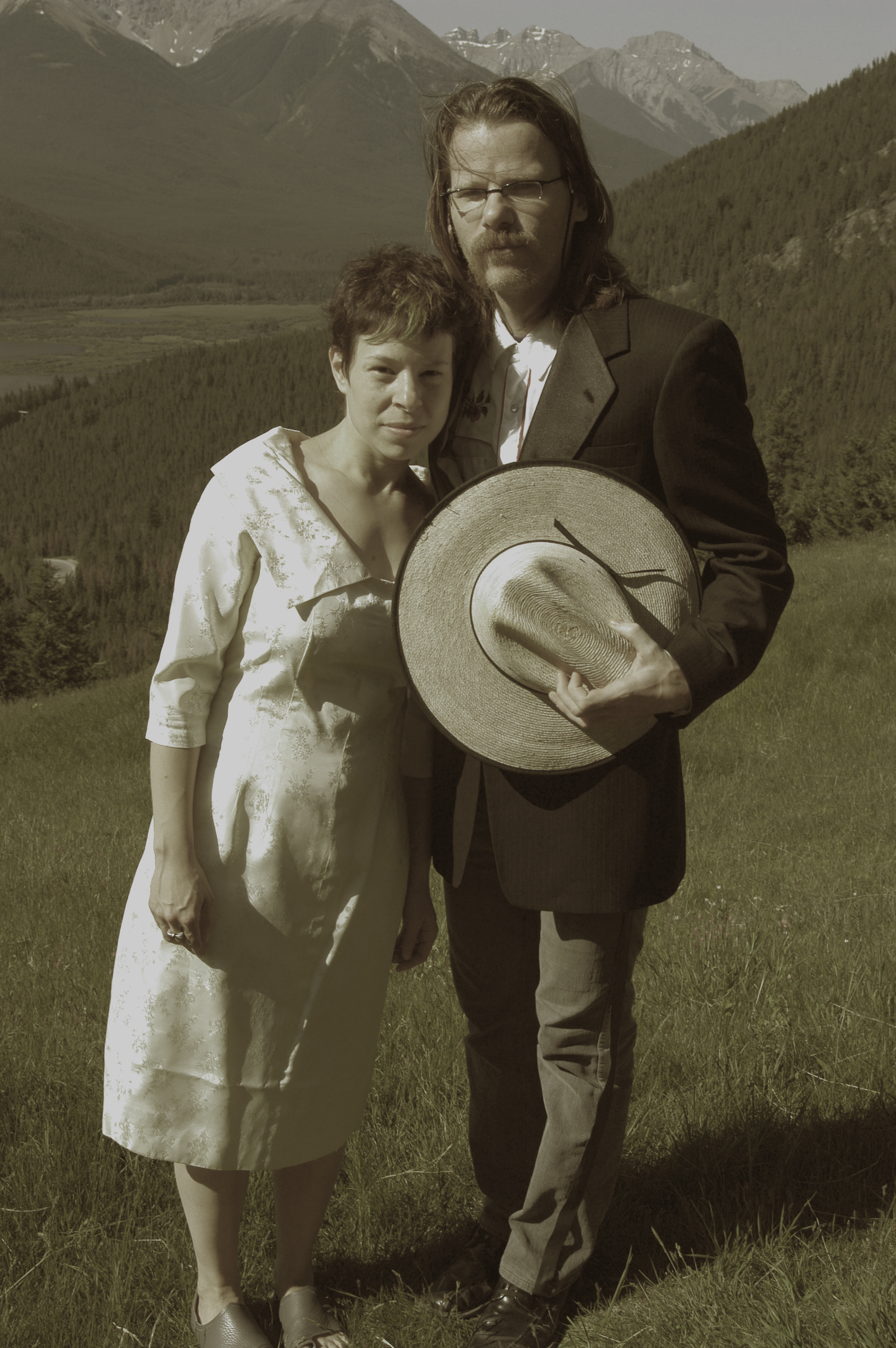
Wedding Photo July 2nd, 1945
 |
|
Enrique and Roberta Ruggenbaum Wedding Photo July 2nd, 1945 |
When Franceska (Frank) met Roberta (1989), Stacey was twice married and living in the American South west (this is only relevant because Frank and Stacey met five years later, corresponded, at first infrequently, and were married in 1994).
Back to Franceska and Roberta, they met once every week, at first... It soon came that if they hadn't spoken or met within the day, Roberta would call.
Roberta kept files for Franceska. At first there were all the obvious documents, documents that Enrique had lifted in order to publish them within his papers. But then, there were those documents Roberta had stowed away, that hadn't made it into Enrique's papers. These were the papers Roberta had found interesting for reasons other than Enrique's. These were also the documents Roberta brought out easily upon enquiry of another sort.
Later, there were still more documents... those that had seemed less important... the ones that had been used as book markers, the ones that had lists or phone numbers jotted on the back... Roberta at first, only kept an eye open for them, but quickly began activly looking for them... until, she began finding those that she had never seen, caught at important pages of books she had never read... This is perhaps what began her search through Enrique's papers.
But none of this would end at their little faculty house. There were more. There were little gaps between the years... and there were all those that had been written before they had moved there... she began searching for the estate of Jérome Chapelet.
Jérome was Enrique's predecessor at his little Oxford faculty house. Jérome taught foundation studies... or classics, they had changed the curriculum many times in the fifty years he had taught. On the night of his burial, in 1946, over a 100 students stood by the grave, most of whom insisted to stand there as the casket was lowered into the ground.
The documents that Frank had first gone to Roberta in search of were references, in Enrique Ruggenbaum's research, to unknown works. What she quickly discovered was that these works were the offspring of an obscure dispersion of individuals all keeping contact with the deceased Jérome Chapelet, by multiple means. These works had arrived at the small faculty house for many years, as if oblivious of his passing.
When, in 1995, Frank and Roberta finally found the heiress of Jérome's meager fortune, they found her in a small apartment in Brooklyn, in a backyard of over-grown flowers. They learned that, within the past ten years, she had slowly given what amounted to be all of Jérome's documents to her son. He, conversely, had gone on to use these as raw material in a series of art projects. She showed Frank and Roberta the sculptures she was storing in the basement. Few of the documents used in the sculptures were illegible; most required special tricks of the light or what seemed to be precision dismantling. Most of Jérome's documents, however, were with the son, Vaughn, in London, which was very convenient indeed. When Frank and Roberta returned to the UK, they quickly befriended young Vaughn, and had him over for tea often.
The subject of these documents is, by some, thought to be the maine subject of lafin. This could be a difficult position to argue. The subject of these documents is still largely shrouded in the multiplicity of its authors, and their either conflicting or completely unrelated directions. The main objection however, if not the only real one is that these works, despite having unwittingly brought many of the current board members into a common frame, have only been studied by two of these. As a matter of course, they have been of great interest in the compilation of the press' archives, and continue to be thought of as one branch of lafin's previous incarnations.